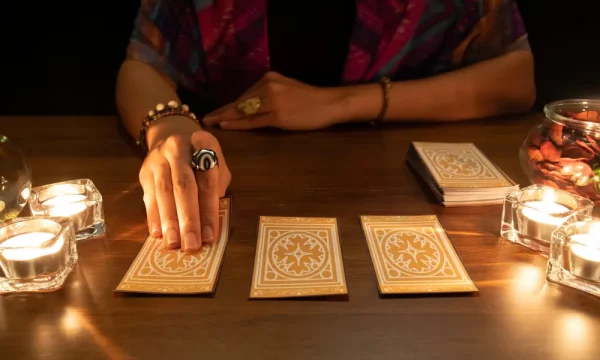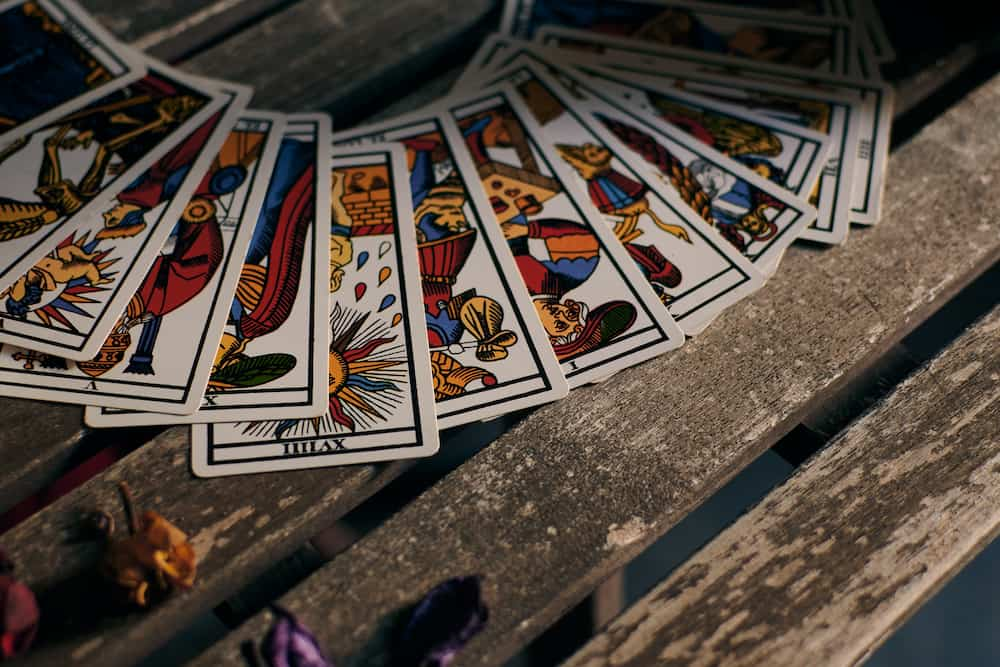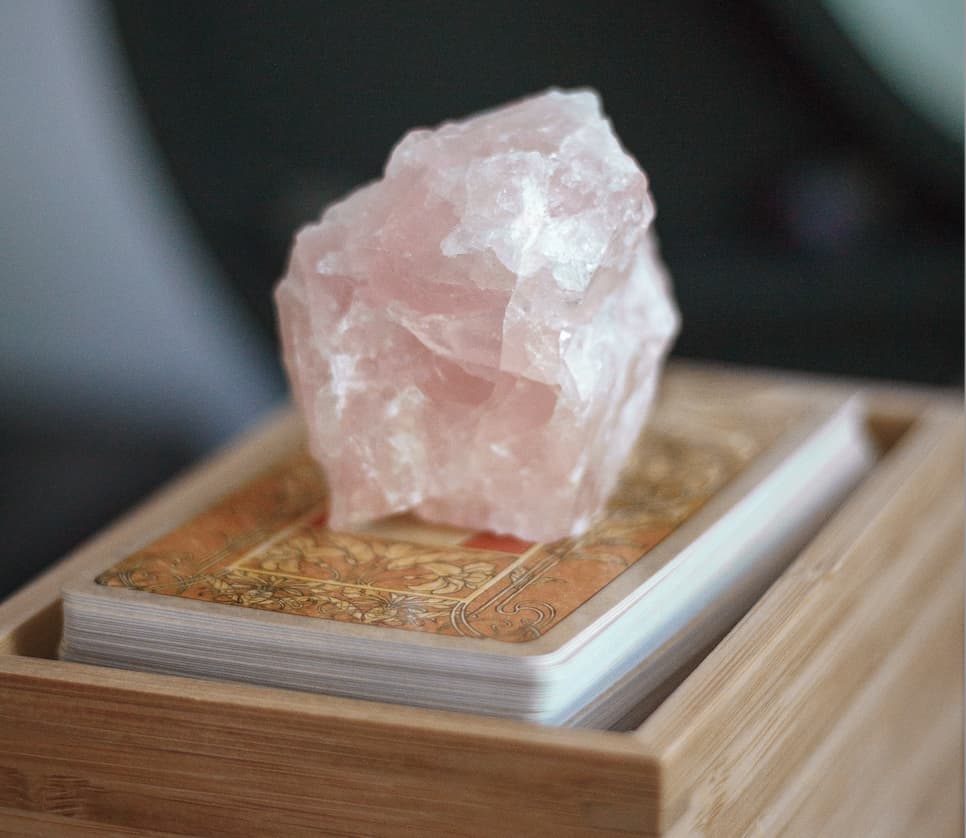
The Truth About Tarot: Is It a Closed Practice?
Last Updated: July 26, 2022
There is a lot of mystery and misconception surrounding tarot readings. Some people believe that tarot readings are a closed practice and that only those with special knowledge can perform them. However, I do not believe that this is the case! In reality, anyone can learn how to read tarot cards with a bit of practice.
In this blog post, we will explore the history of tarot readings and dispel some of the myths that surround them. Read more for insightful information on this fascinating topic!
What is a closed practice?
A closed practice in spirituality is something that is only done or shared among a closed group of people. The idea is that only those who are initiated into the practice can understand it. This is often because the practice is seen as special, mystical, or magical, and therefore requires special knowledge to perform correctly.
Closed practices are often associated with ancient wisdom traditions, such as shamanism or witchcraft. Closed practices definitely still exist today. There are many ancient wisdom traditions that are passed down through closed groups of people. While some people believe that closed practices are necessary to protect the sanctity of the practice, others believe that they are outdated and exclusionary.
I believe that it is up to the individual to consciously decide whether or not they want to participate in a closed practice but in my own personal spirituality, I stay away from things that do not concern me. If you decide that you want to learn a closed practice, I encourage you to seek out reliable sources and genuine teachers who can help you learn instead of the likes of internet forums or Facebook groups.
The brief history of tarot readings
Tarot readings have a long and varied history. They are believed to have originated in medieval Europe and were first used as a game like the playing card games from China in the 9th century. They were not originally a divination tool. The first recorded use of tarot cards as we now know it was in the 15th century, in Italy (typically around port areas such as Venice) as “Carte da Trionfi” or triumph cards.
The major arcana triumph/trump cards were typically handpainted and very expensive. This is what we know as the “Tarocchi” designs. However, it wasn’t until the 1700s that tarot readings became popular throughout Europe for superstition and divination readings.
There are several infamous French and German counterparts here but let’s focus on Court de Gébelin who speculated on the mysticism aspects of the tarot. They wrote multiple books on mythology and universal languages. They believed that the tarot artwork in the playing cards presented themselves as hidden messages from the Ancient Egyptian god of wisdom Thoth.
He wrote that tarot was a secret only shared with a trusted few, that these messages across different languages could communicate these spiritual beliefs through a disguised message (displayed as tarot artwork). All of this was speculation, there weren’t ever any facts to back it up, but it left people philosophizing for the centuries ahead.

Ancient Egyptians, Jewish Mysticism, Roma uses, and more
Court De Gébelin suggested that the words “tar” and “ro” (translating to “Royal Road” from the Egyptian language) gave the receiver the initiation to move into the Egyptian Priesthood, and therefore the spiritual wisdom that came with this role. Court De Gébelin also suggested that those from the Romany culture (who utilized normal playing cards for divination in their closed practice) were lineal descendants of the Ancient Egyptians, trusted to carry these mystical messages and that they were the ones to bring the cards into Europe.
This speculation was disproved by Jean-Francois Champillion who found no evidence to support it when he deciphered Egyptian hieroglyphics. There is currently no supporting evidence that tarot was created by the Ancient Egyptians.
When it comes to Roma use, they have two words when referring to their style of Cartomancy (divination by card reading) and they are:
- “Dukkering” – a modification of a Wallaco-Sclavonian word meaning something spiritual, otherworldly, or mystical
- ‘Bocht’ – a Persian word similar in meaning to the Sanskrit “bhagya”, which means fate
The number of Major Arcana cards also had suggestions that this is a link to the Hebrew alphabet, which has 22 letters, and to gematria (a form of Hebrew numerology).
Symbolism can be shown across all cultures and religions when travelers share the messages, so it is unsurprising that we see some within the tarot artwork itself. Pamela Colman Smith as the artist was instructed by A.E. Waite to create artwork inspired by Jewish mysticism that they hadn’t actually been able to dabble into themselves; together they used Cabala references with their work as an attempt to convert Jews to Christianity such as the “Torah scroll” with the High Priestess and the name of God spelt out on the Wheel of Fortune. It has been confirmed that modern tarot as we know it does not come from Judaism.
This is the most that I can talk about those practices however as it is closed (and therefore none of my business) but it is confirmed that the Roma culture didn’t create tarot, that it doesn’t belong to them, and that the Jewish symbolism aspect was an inspiration for the RWS tarot deck most used today.
So, is tarot an open or a closed practice?
To summarise this whole article for you, I can confirm the following:
- Tarot historical evidence shows its art originated in Europe in the mid-15th century.
- It was originally from the 9th-century Chinese playing card games, and then later developed spiritual connotations.
- Ancient Egyptians didn’t create the tarot.
- Roma culture does not own tarot as a practice but they have their own methods of cartomancy.
- Any Jewish mysticism aspects are purely inspirational and not the main magickal purpose.
- Tarot was originally called “Carte da Trionfi”
- Tarot reading is an open practice, whilst it may reference some other religions and closed practices in the Rider Waite Smith artwork as a nod to human nature – it’s not officially linked.
I hope you enjoyed this blog post. If you have any questions or comments, please feel free to get in touch. Thank you for reading!
Recommended further reading:
- https://www.jewitches.com/post/is-tarot-jewish
- Tarot and Ancient Egypt – A Connection?
- Early Tarot 1420-1475
“The Transitory Tarot: An Examination of Tarot Cards, the 21st Century New Age and Theosophical Thought” by Morandir Armson

I have been reading Tarot for more than 15 years. I have always enjoyed using my intuition to provide clarity and insights to others. Tarot is one of my favorite forms of divination, and I love sharing that passion with like-minded folks.
Continue your tarot journey ✨
This page is part of our collection of articles on learning about tarot. If you enjoyed reading this, then you will enjoy the following articles.

Let’s look at the top ten ways you can cleanse your Tarot or Oracle deck, as well as some do’s and don’ts to protect your cards.

By tuning in with our own intuition, tarot cards help you find the answers to the questions you have about your life.

In recent years, Tarot has gained immense popularity as a tool for self-discovery and personal growth. But can anyone read tarot cards?

Tarot is one of the most popular Divination tools, with hundreds of designs and adaptations to suit anyone’s needs.
